The Best Indoor Vine Plants and Climbers (With Pictures of Houseplant Vines)

Indoor vine plants and climbing plants are great houseplants to bring nature into your home environment. The best indoor vine plants and climbers can be used in hanging baskets, trained to climb, or just put in a pot on a high shelf. The trailing vines and green leaves of indoor climbing plants can complement the décor of any interior. Trailing house plants often grow well in low light—just perfect for shade, dim rooms, or offices.
How to care for indoor vine plants: To grow thriving vine houseplants, plant in a pot with well-draining fertile soil, water when the soil is partly dry, mist occasionally to increase humidity, and fertilize monthly. Most indoor vines grow well in bright, indirect light and average room temperatures between 65 and 85°F (18 – 29°C).
In this article, you will learn about the best indoor climbing vine plants that are easy to grow and look after. Along with the scientific names, pictures and descriptions will help identify draping plants you can grow indoors.
The Best Indoor Vine Plants (Overview)
Heartleaf philodendron—This common vining houseplant is easy to care for, survives in low light, and can be used in a hanging basket or as a climber.
Ivy—Cascading over the sides of pots, ivy is one of the most popular indoor plants with running vines. Ivy plants grow well in the shade, and there are several species ideally suited to growing at home.
Devil’s ivy—Also called pothos, devil’s ivy is a superb climbing vine that is also popular for indoor hanging baskets. The brightly-colored yellow and green leaves brighten up any living space.
Inch plants—Extremely easy to grow indoors, inch plants have colorful bushy foliage and trailing stems. These Tradescantia plants look superb suspended from the ceiling in hanging baskets, on a high shelf, or draping off a tall plant stand.
Creeping fig—This houseplant has long, trailing vine-like stems and grows in most conditions. Because it’s a spreading plant, the creeping fig looks bushy in a hanging basket with foliage cascading over the pot.
The Best Indoor Vines and Climbers (With Pictures of Houseplant Vines and Names)
Here are some of the best indoor vine plants and climbers that grow in low light, bright light, and filtered sunlight.
Ivy Plant (Hedera)

One of the best indoor vines you can grow is ivy. These hanging vine plants adapt to many growing conditions and are excellent at providing greenery in shaded places. The charming evergreen foliage help to add color to indoor living spaces even on dark winter days.
All species of indoor ivy vines look good draping from hanging baskets or climbing vertically up trellises or moss poles. Many people have ivy plants because they are easy to grow, tolerate infrequent watering, and don’t mind a bit of neglect. It’s important to remember that ivy plants are toxic, and you should keep the draping vines away from pets.
Here are a few species of popular ivy plants that have long creeping vines.
English ivy (Hedera helix)—A fast-growing vining houseplant that has evergreen foliage and the most popular type of indoor ivy vine. The leaves are shaped like a duck’s foot and are usually variegated with creamy-white or silvery patterns on dark green. This ivy grows in both filtered sunlight and low-light conditions and it’s one of the best shower plants to keep in the bathroom.
Irish ivy (Hedera hibernica)—This ivy is a vigorous grower that produces long trailing stems and glossy green foliage. Growing in low light, you may have to prune leggy vines to improve its attractive appearance.
Japanese ivy (Hedera rhombea)—Another fast-growing type of climbing house plant. Compared to English and Irish ivies, this species has larger leaves that are oval rather than lobed.
Algerian ivy (Hedera canariensis)—Also called Canarian ivy, this climbing plant has broad, glossy, dark green leaves.
Persian ivy (Hedera colchica)—This ivy species has shiny leaves that tend to be heart-shaped or elongated oval. Persian ivy has the largest type of leaves from any of the ivy species.
Swedish Ivy (Plectranthus verticillatus)
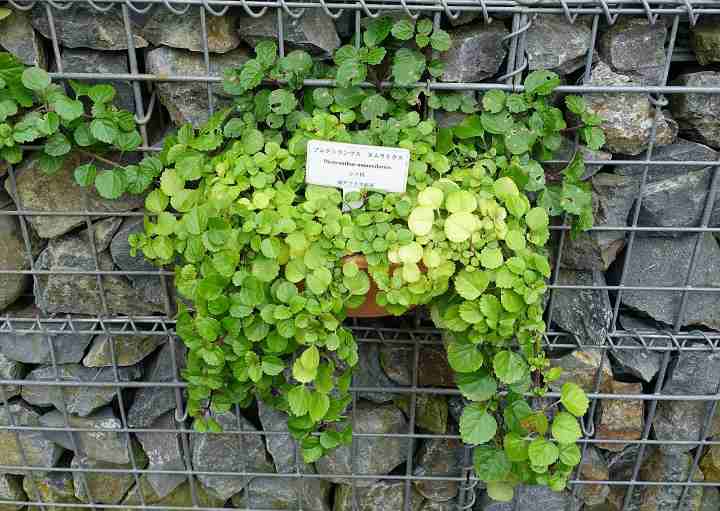
This hanging basket plant is not a real ivy and isn’t native to Sweden. However, Swedish ivy is an excellent houseplant if you want to grow an indoor vine plant without any fuss. The trailing stems have green oval leaves with scalloped edges. The spectacular foliage looks dramatic, draping from hanging baskets or over the edge of a shelf.
The primary care requirement for Swedish ivy is to keep it in a bright spot, but away from direct sunlight. To help the plant thrive, water when the soil is partly dry. To encourage growth, pinch off vine tips after flowering to prevent leggy stems growing.
Devil’s Ivy (Epipremnum aureum)
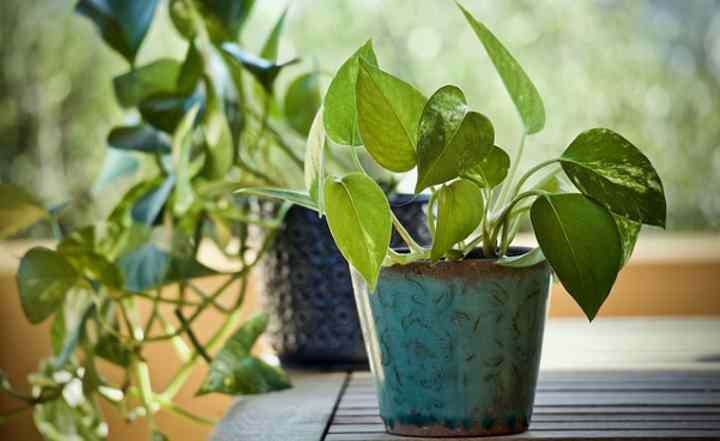
Even though its common name is devil’s ivy, this is not a real ivy. Species of Epipremnum aureum are also called golden pothos, devil’s vine, marble queen, money plant, and Ceylon creeper. Pothos is a popular low light plant that is perfect for beginners. The hardy vine thrives in bright, indirect light, and the soil should be kept slightly moist.
Devil’s ivy is prized for its spectacular foliage. Some variegated types of pothos have large yellow and green leaves. A different kind of this “ivy” plant—neon pothos—has bright neon-green leaves that are almost translucent.
Heartleaf Philodendron (Philodendron hederaceum)
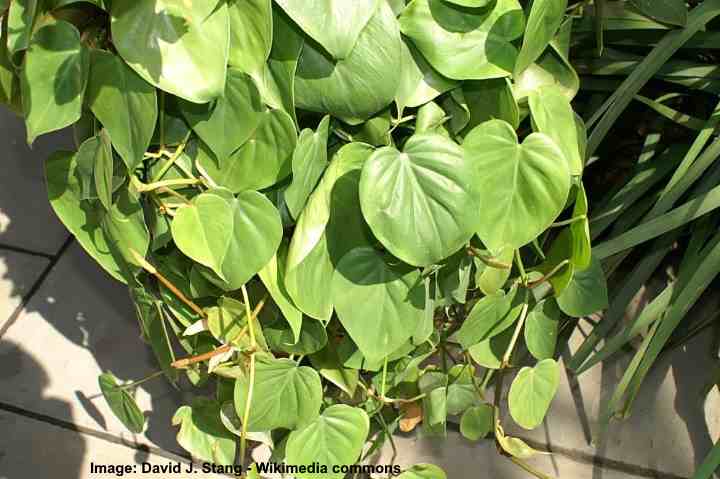
Heartleaf philodendron is another example of a superb low-light indoor hanging plant. This climber has large, green heart-shaped leaves that have a glossy shine to them. The sun-shy houseplants need watering just enough to prevent the soil from drying out. Low to moderate light and plenty of humidity seem to be the best growing conditions to help the plant thrive.
The long creeping vines add vertical greenery when hanging in a basket. You can also train the plant to grow up moss poles or along walls.
Looking at pictures of heartleaf philodendron, you will see that they are similar in appearance to pothos plants.
Arrowhead Plant (Syngonium podophyllum)
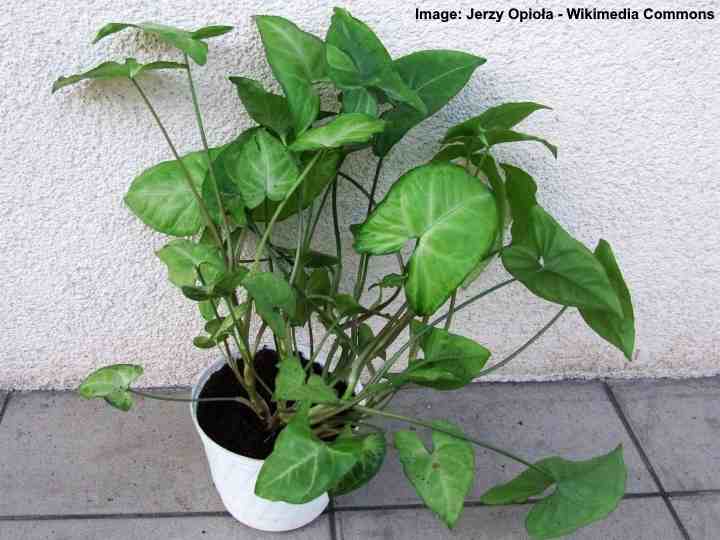
Arrowhead plants are some of the best indoor climbing plants if you want bushy foliage in bright areas. These hardy vining plants have large variegated leaves that are in the shape of an arrow’s head. Other common names of the plant also refer to its leaf shape—goosefoot or arrowhead vine.
Without pruning, arrowhead plants have a creeping growth habit. So, growing in hanging baskets allows the long vines to dangle down elegantly. With regular pruning, the vine plant can take on a bushier appearance.
Although arrowhead vines thrive in bright filtered sunlight, the darker leafed varieties can grow well in shaded, low-light areas.
Peperomia
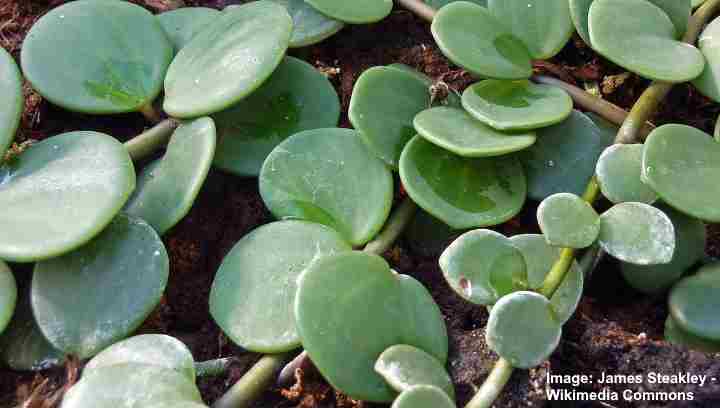
In the picture: Peperomia rotundifolia ‘Trailing Jade’
Peperomias are one of the easiest indoor vine plants to grow in your home—and there are many trailing varieties to choose from. These small houseplants are famous for their superb foliage. Leaf patterns can be striped, marbled, or speckled. Some types of these trailing house plants have oval, lanceolate, or ovate-shaped leaves. Placing a potted peperomia at eye level on a shelf or hanging from a basket creates a real eye-catching visual feature due to its cascading foliage.
What’s the best way to care for peperomias? Place the container in a bright spot, water when the soil is partly dry, and mist occasionally. Peperomias also grow in low light, but their foliage may lose some vibrancy.
Creeping Fig (Ficus pumila)
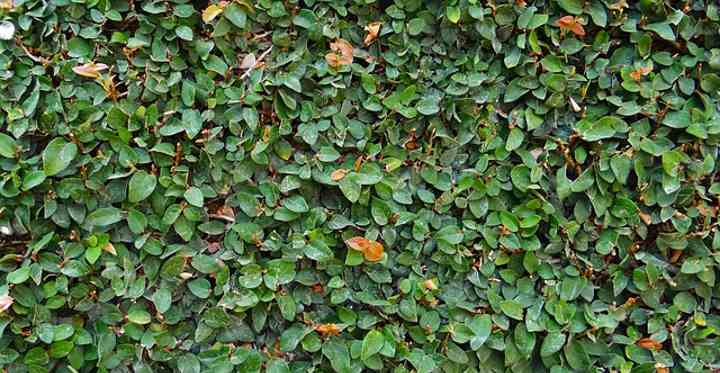
Creeping fig plants have running vines and a bushy nature that looks like a cascading mound of leaves in a pot. The Ficus pumila is the smallest of the ficus plants and one of the few vining varieties. Thin stems and small leaves create an attractive look if you place the plant pot on a desk, shelf, or let draping stems dangle from a hanging basket.
Plenty of bright light is the crucial care requirement of creeping figs. As well as needing a sunny spot, they require thorough watering when the soil is partly dry.
Wandering Jew (Tradescantia zebrina)
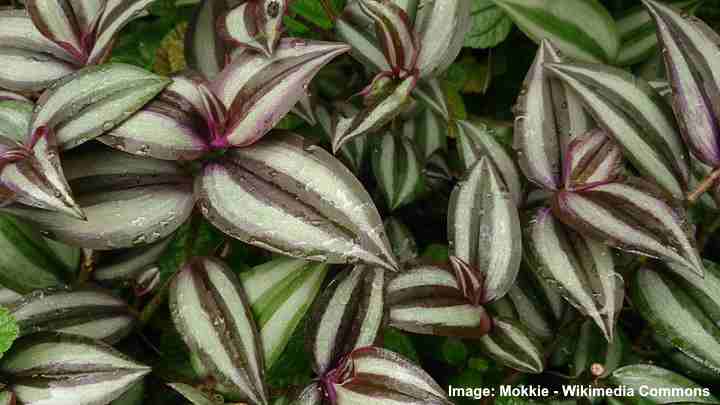
Also called inch plants or spiderwort, the wandering Jew is another easy-to-grow trailing houseplant. There are many species of Tradescantia plants, but all of them have fascinating foliage. The attractive features of wandering Jews are their long creeping stems decorated with blade-shaped patterned leaves.
Some varieties of wandering Jews are purple plants with deep variegated lilac and silvery patterns. Other types have stripy leaves that are dark green and light green. To create an eye-catching plant feature, hang a Tradescantia plant with purple foliage in a hanging basket.
Although this a flowering plant for hanging baskets, the flowers are insignificant compared to its stunning leaves.
Black-Eyed Susan Vine (Thunbergia alata)
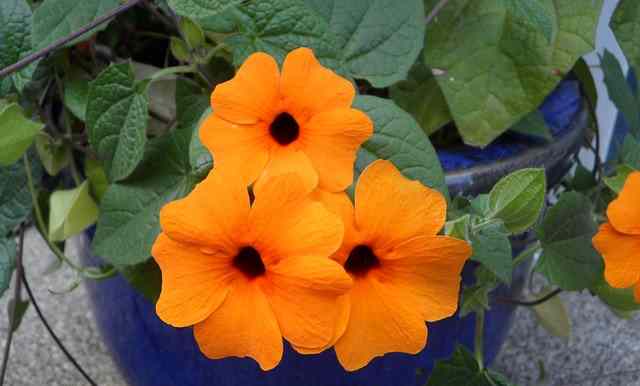
Black-eyed Susan vine is an excellent vining houseplant if you want green foliage and bright yellow or orange flowers. This sun-loving vine grows well in pots and hanging baskets where its stems can reach lengths of between 3 and 6 ft. (0.9 – 2.4 m).
One of the beauties of having black-eyed Susan plants in a hanging basket is that you can hang them outdoors in the summer. You can also grow them in pots and have the stems climb up trellises.
With these flowering vine plants, the most common flower color is yellow. However, you can also find plants with pink flowers, as well as orange, cream, and pale yellow.
Maidenhair Vine (Muehlenbeckia complexa)

The creeping nature of maidenhair vines and beautiful green foliage make these plants an excellent choice for an indoor vine. Native to New Zealand, the vine plant is also called angel vine, necklace vine, lacy wire vine, or creeping wire vine. These common names describe the thin, wiry foliage that grows densely into a small bushy plant. The thick appearance is due to its tangled growth habit.
There are many ways to decorate a bright room with this vining plant. Hang in a basket to add greenery to a well-lit corner. Grow in a pot and let the vines spill over the container to cover a surface. Or, let the climbing vine grow up a trellis or moss pole.
Teddy Bear Vine (Cyanotis kewensis)
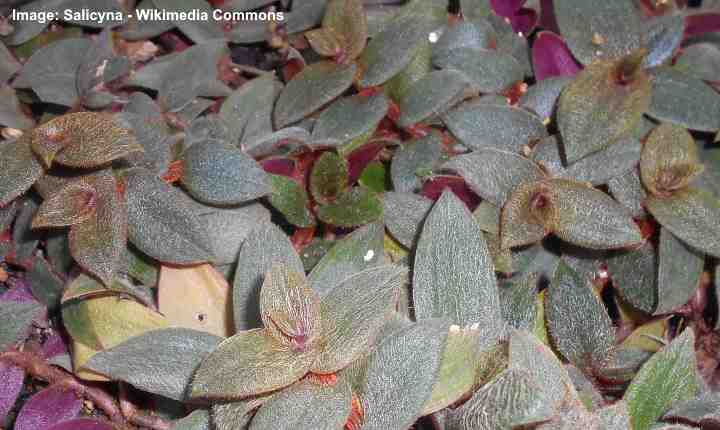
Teddy bear vine is one of the most unusual indoor vine plants you can grow. The plant has foliage unlike that of any other trailing houseplant. Long creeping stems feature fuzzy, silvery green leaves in the shape of a tear. The soft foliage tumbles over the pot’s edges as they grow longer. To keep the foliage vibrant and colorful, hang or place in bright, indirect light.
Teddy bear vine is a slow-growing indoor vine plant. Apart from watering enough to prevent the soil drying out, there is not much else you have to do to care for it.
Betel Leaf Plant (Piper sarmentosum)
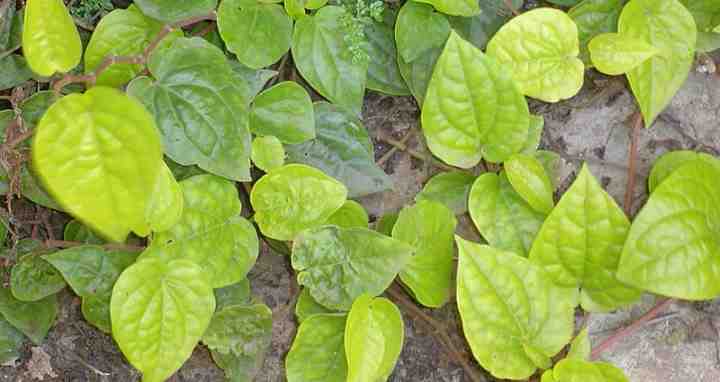
Betel leaf is a perennial climber plant with thin, heart-shaped leaves and a glossy appearance. Also called the pepper leaf plant, the vining plant is native to India. The spicy leaves are often used in cooking to add a bit of “kick” to local cuisine. Growing in a hanging basket or container, the vines drape of the side to create greenery.
To care for a vining betel leaf plant, grow it in moist soil, place the container in a sunny spot with partial shade, and only water when the potting soil is partly dry. If you live in warmer climates, this is an excellent creeper plant for groundcover.
Jasmine (Jasminum polyanthum)
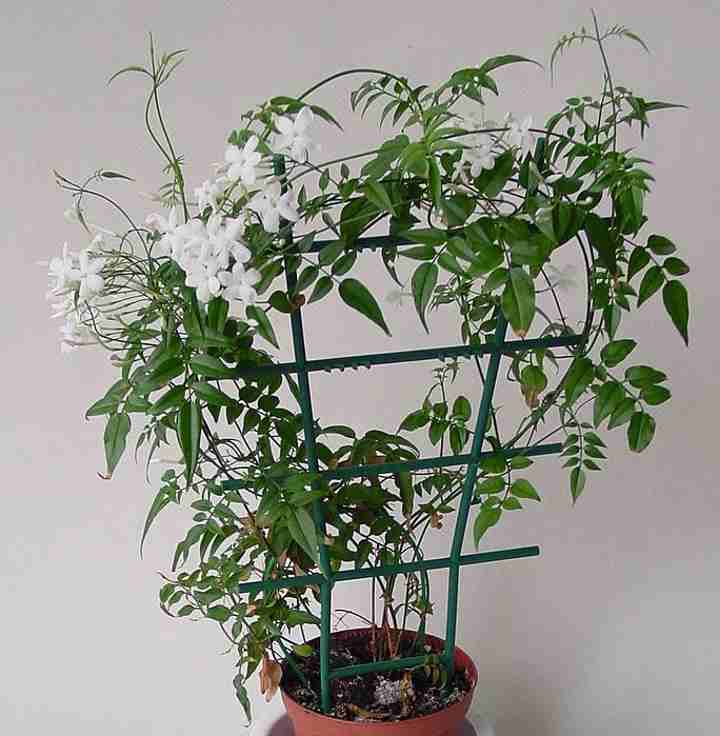
Jasmine is a vine plant that you can grow indoors—although it is somewhat trickier to grow than other indoor climbing plants. The species Jasminum polyanthum is the type of flowering jasmine that is commonly grown indoors. Jasmine plants are prized for their sweetly scented white flowers, dark green leaves, and robust growth. These exotic vine plants have a climbing and spreading growth nature.
When growing jasmine as an indoor vine plant, place it near a south-facing window. Because they are climbers, provide a small trellis for support. During summer months, it is best to put your jasmine pot outdoors in a sunny spot. They need cool fall temperatures to develop flowering buds that eventually bloom in February.
String of Pearls (Senecio rowleyanus)
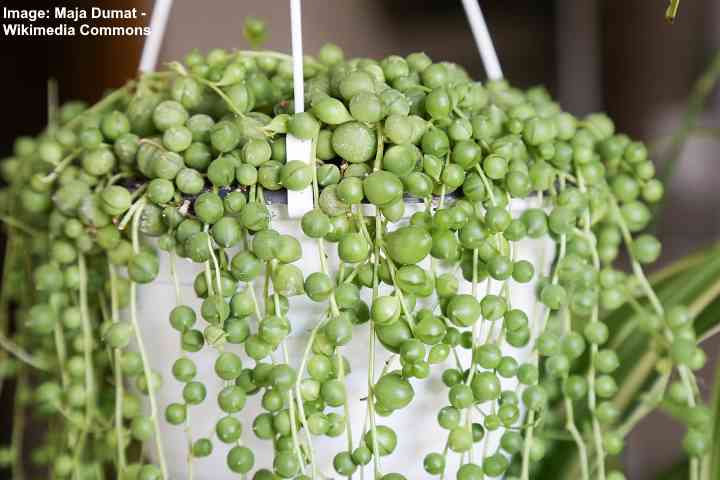
String-of-pearls is a type of succulent that grows bead-like leaves on thin dangling vines. The other common name for Senecio rowleyanus is string-of-beads. When looking at pictures of this vine plant, it is easy to see how it got its name.
Because string of pearls doesn’t need a lot of water, they are effortless to care for at home – they are on the list of easy to care for hanging houseplants. All you need to do is hang or place the plant in a bright location where it gets a few hours of sunlight daily.
These draping indoor plants create a stunning waterfall effect as the thin thread stems dangle down. You can also plant string-of-pearls in a mixed hanging basket garden with other drought-resistant plants.
String of Hearts (Ceropegia woodii)
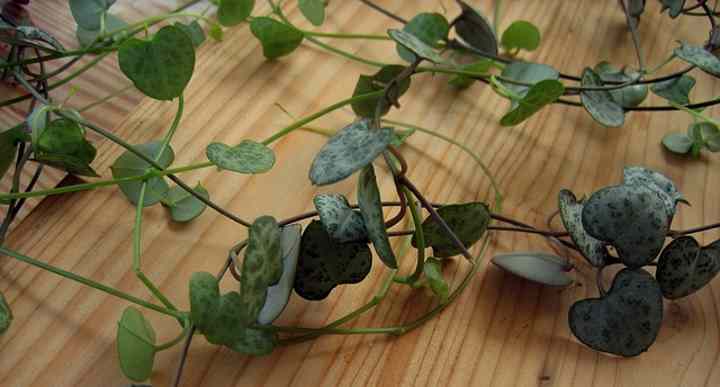
String-of-hearts is another indoor trailing plant with dainty thread-like stems and heart-shaped leaves. Also called sweetheart vine, rosary vine, or chain of hearts, this plant is also a type of vining succulent. To enjoy the fascinating colors on the delicate leaves, place the houseplant vine in a bright location.
You can easily place string of hearts on a high shelf because the trailing vines hang down 6 to 13 ft. (2 – 4 m). Apart from the variegated silver and green leaves, the other interesting feature is the way the leaves grow on the stringy stems. These leaves are spaced apart, looking like a long string of beads. This indoor vine plant is one of the best plants for hanging baskets.
To care for string-of-hearts: water only when the soil is dry and keep in bright light.
If you want to add color to your home, read our article about the best flowers for hanging baskets.
How to Care for Indoor Vines
Growing beautiful vine plants or climbing house plants helps to bring the outside indoors. Many indoor houseplants are also known to filter the air. Even though many trailing or creeping indoor plants are low-maintenance, there are a few things to remember to help them thrive.
Light—Generally, houseplants grow best in bright light where they are protected from direct sunlight. Tropical houseplants also adapt well to low-light or shade. However, they may not bloom, and their colorful foliage could fade if the light is minimal.
Watering—Because they grow in pots, the potting mix should be well-draining with plenty of organic matter. This type of potting mix helps to hold enough moisture without the soil becoming waterlogged or soggy. Water indoor vine plants thoroughly until water drains from the pot.
Humidity and temperature—Vining houseplants and climbing indoor plants thrive in average room temperatures. Keep away from cold drafts, hot radiators, or direct sunlight. Generally, household air is too dry for most common vine/climber plants. So, increase humidity by misting the leaves regularly. You can also install a humidifier or use a humidifying pebble tray to help indoor vine plants thrive.
Related articles:
- The Most Amazing Colorful Houseplants
- The Best Flowers for Hanging Baskets
- Unique and Unusual Houseplants You Need to Grow
